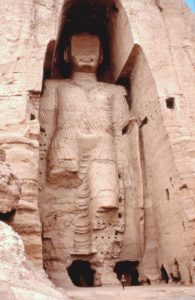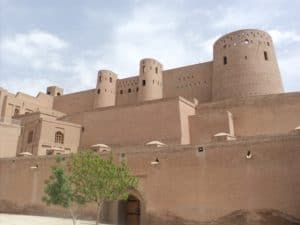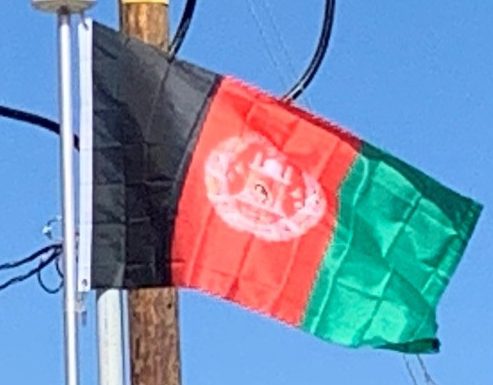
During the first century BCE, the Parthian Empire subjugated the region, but lost it to their Indo-Parthian vassals. In the mid-to-late first century CE the vast Kushan Empire, centered in Afghanistan, became great patrons of Buddhist culture, making Buddhism flourish throughout the region. The Kushans were overthrown by the Sassanids in the 3rd century CE, though the Indo-Sassanids continued to rule at least parts of the region. They were followed by the Kidarite who, in turn, were replaced by the Hephthalites. By the 6th century CE, the successors to the Kushans and Hepthalites established a small dynasty called Kabul Shahi. Much of the northeastern and southern areas of the country remained dominated by Buddhist culture.
Islamization and Mongol Invasion:
Arab Muslims brought Islam to Herat and Zaranj in 642 CE and began spreading eastward; some of the native inhabitants they encountered accepted it while others revolted. The land was collectively recognized by the Arabs as al-Hind due to its cultural connection with Greater India. Before Islam was introduced, people of the region were mostly Buddhists and Zoroastrians, but there were also Surya and Nana worshipers, Jews, and others. The Zunbils and Kabul Shahi were first conquered in 870 CE by the Saffarid Muslims of Zaranj. Later, the Samanids extended their Islamic influence south of the Hindu Kush. It is reported that Muslims and non-Muslims still lived side by side in Kabul before the Ghaznavids rose to power in the 10th century.
By the 11th century, Mahmud of Ghazni defeated the remaining Hindu rulers and effectively Islamized the wider region, with the exception of Kafiristan. Afghanistan became one of the main centers in the Muslim world during this Islamic Golden Age. The Ghaznavid dynasty was overthrown by the Ghurids, who expanded and advanced the already powerful Islamic empire.

In 1219 AD, Genghis Khan and his Mongol army overran the region. His troops are said to have annihilated the Khorasanian cities of Herat and Balkh as well as Bamyan. The destruction caused by the Mongols forced many locals to return to an agrarian rural society. Mongol rule continued with the Ilkhanate in the northwest while the Khalji dynasty administered the Afghan tribal areas south of the Hindu Kush until the invasion of Timur, who established the Timurid Empire in 1370.
In the early 16th century, Babur arrived from Fergana and captured Kabul from the Arghun dynasty. In 1526, he invaded Delhi in India to replace the Lodi dynasty with the Mughal Empire. Between the 16th and 18th century, the Khanate of Bukhara, Safavids, and Mughals ruled parts of the territory. Before the 19th century, the northwestern area of Afghanistan was referred to by the regional name Khorasan. Two of the four capitals of Khorasan (Herat and Balkh) are now located in Afghanistan, while the regions of Kandahar, Zabulistan, Ghazni, Kabulistan, and Afghanistan formed the frontier between Khorasan and Hindustan.
Hotak Dynasty and Durrani Empire:
In 1709, Mirwais Hotak, a local Ghilzai tribal leader, successfully rebelled against the Safavids. He defeated Gurgin Khan and made Afghanistan independent.[41] Mirwais died of a natural cause in 1715 and was succeeded by his brother Abdul Aziz, who was soon killed by Mirwais’ son Mahmud for treason. Mahmud led the Afghan army in 1722 to the Persian capital of Isfahan, captured the city after the Battle of Gulnabad and proclaimed himself King of Persia. The Afghan dynasty was ousted from Persia by Nader Shah after the 1729 Battle of Damghan.
